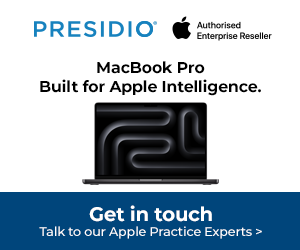The pressure to do more with less will push enterprises to adopt agile approaches to integration, dominated by new mobile and internet of things (IoT) middleware, B2B integration solutions, and cloud-based integration platforms.
According to a new report from analyst Ovum entitled “2015 Trends to Watch: Integration and Middleware”, enterprise will spend an estimated $16.3 billion (€13 billion) on middleware software in 2015, an increase of 9.3% on a year-on-year basis.
This spending will be dominated by four key trends, according to the author, Saurabh Sharma, senior analyst, Infrastructure Solutions, Ovum.
Enterprises will increasingly use MBaaS and integration capabilities provided by MEAPs/MADPs to deliver a compelling mobile user experience and improve developer productivity
Digital transformation will drive a shift toward agile mobile application integration. Digital businesses require approaches that simplify the development of mobile applications suitable for a range of devices and integration with back-end applications and data sources, says the report. Enterprises will increasingly use mobile backend-as-a-service (MBaaS) and integration capabilities provided by mobile enterprise application platforms (MEAPs)/mobile application development platforms (MADPs) to deliver a compelling mobile user experience and improve developer productivity.
Integration Platform as a Service (iPaaS) and API management will move up the agenda for key integration initiatives. iPaaS will continue to evolve as an integration approach capable of meeting a wide range of integration needs, argues Sharma, including on-premise, cloud, B2B, and mobile application integration. 2015 will see standalone API management solutions cannibalising the market for traditional service-oriented architecture (SOA) governance platforms, and API management for mobile enablement, software-defined networking (SDN), and IoT will be a key IT imperative.
The need for agility and better collaboration and data flow governance will drive B2B integration infrastructure modernisation – B2B integration will gain importance with the ever-increasing need for rapid onboarding of trading partners and customers, effective management of partner communities, and better customer engagement. 2015, says Sharma, will see a significant rise in the adoption of cloud-bases B2B integration services, and the complex interplay of data security, governance, and compliance requirements will drive uptake of comprehensive managed file transfer (MFT) solutions.
A “somewhat” standard IoT middleware stack will remain a work in progress, argues Sharma. Enterprises will continue to use a combination of existing middleware and emerging M2M integration approaches for meeting the requirements of specific IoT use cases. Cloud-based IoT platforms will continue to gain traction and play a key role in the first wave of IoT adoption by enterprises. However, a lack of common (vendor and platform-agnostic) connectivity standards will hinder wider IoT adoption, especially from the perspective of enterprise IoT initiatives of reasonable scale.
“Enterprises need to undertake integration infrastructure modernisation to effectively exploit the quartet of digitalisation, mobility, cloud, and IoT for driving business growth,” said Sharma. “There will be less inertia to a shift toward agile approaches to integration and/or cloud-based integration services, and this will translate into a growing market opportunity for both established and specialised integration vendors.”
TechCentral Reporters






Subscribers 0
Fans 0
Followers 0
Followers